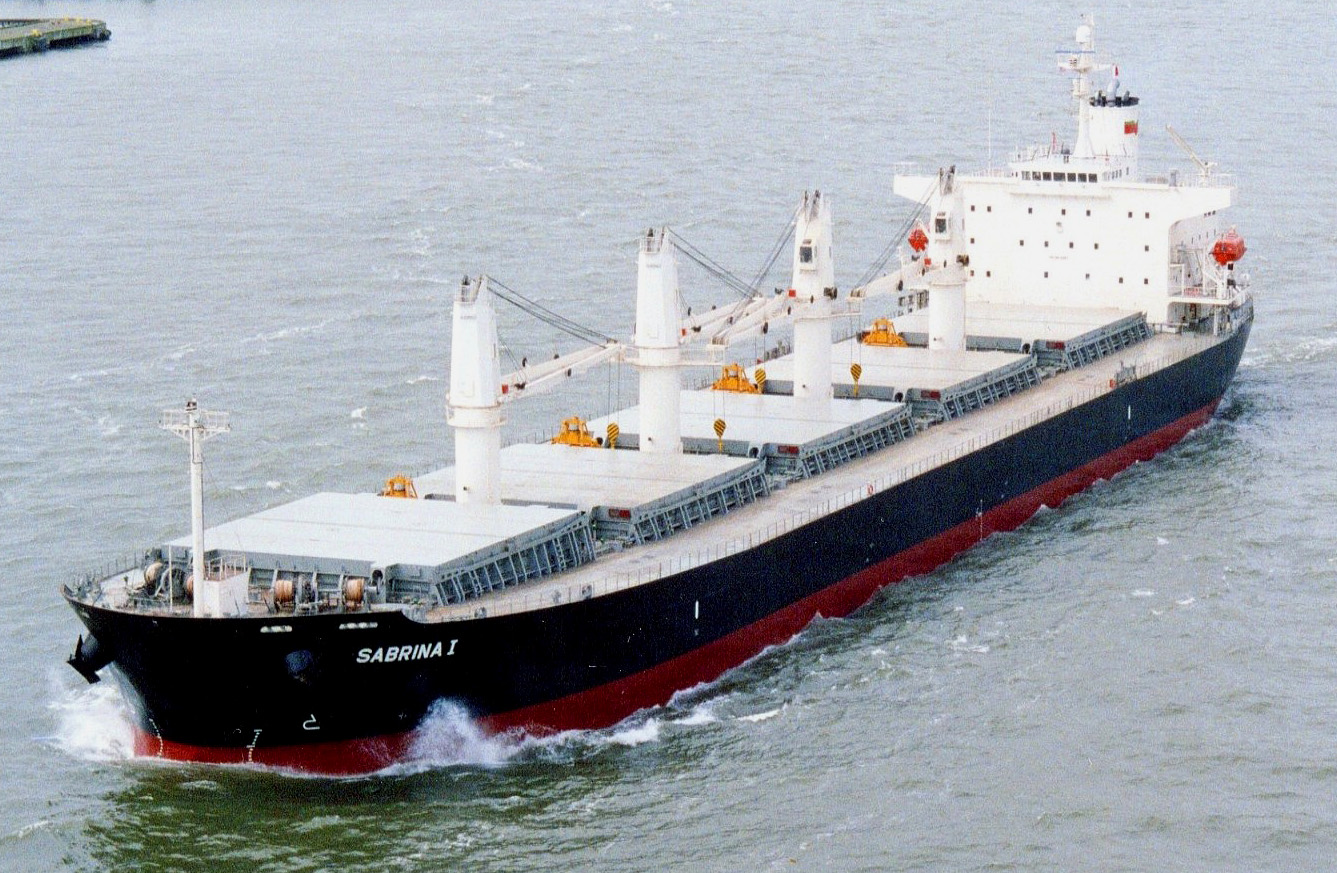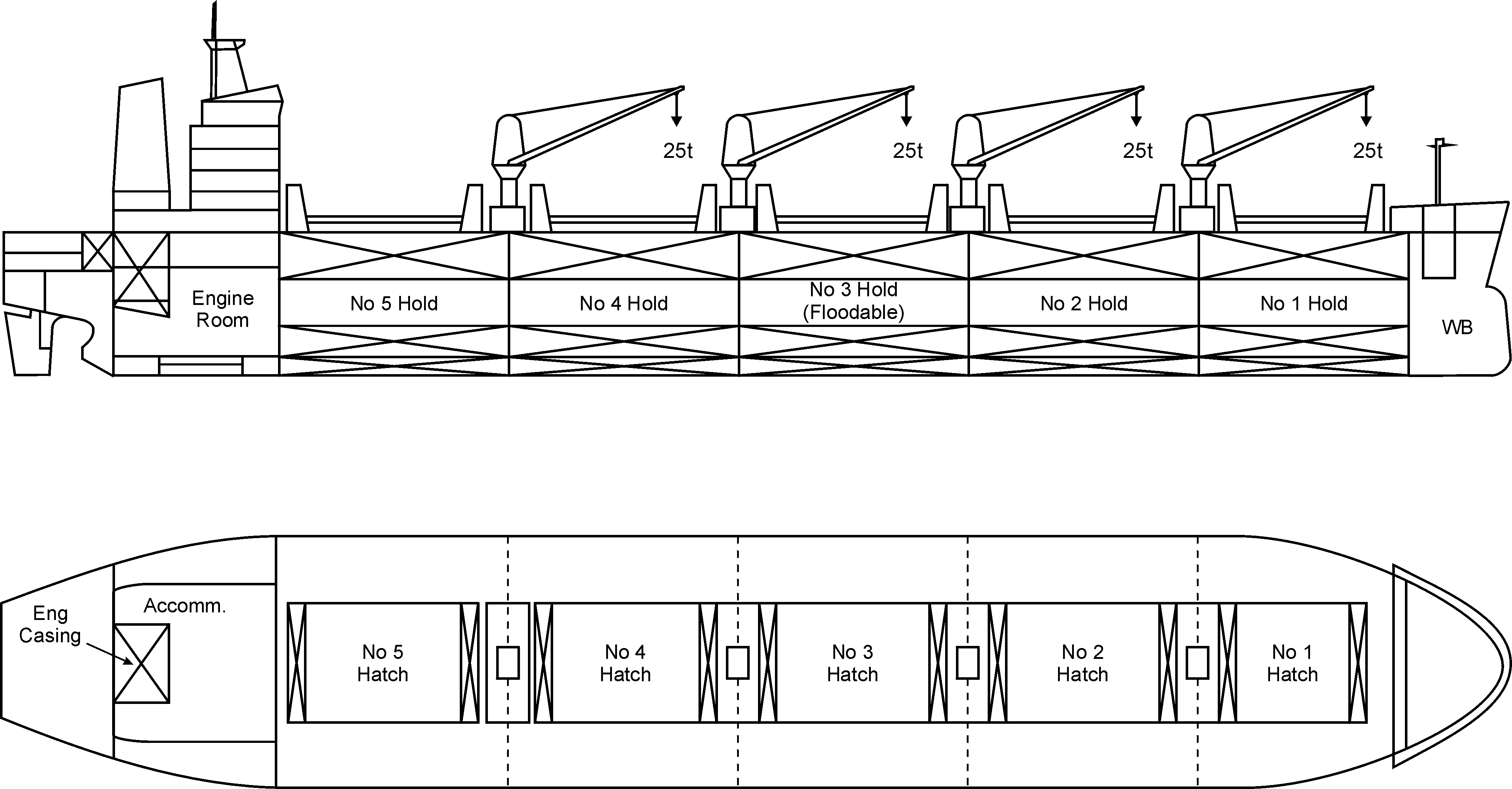|
Mitsui 56 Series
The 56 series is a series of cargo ships built by Mitsui Engineering & Shipbuilding. , 151 ships have been built and 170 ordered. The 151st was delivered to New Blossom Maritime S.A. They are built at Mitsui's Tamano, Okayama, Tamano and Chiba shipyards. Design The ships are bulk carriers, 189.99m long overall (182m between perpendiculars) with 56,000 Deadweight tonnage, dwt and approximately 31000gt. Hold volume is over 70,000m³, divided between five cargo holds with four cranes. Main engines are generally MAN B&W 6S50MC-C low-speed diesels. Service speed is 14.5 knots. References Bulk carriers Ships built by Mitsui Engineering and Shipbuilding {{ship-type-stub ... [...More Info...] [...Related Items...] OR: [Wikipedia] [Google] [Baidu] |
Mitsui Engineering & Shipbuilding
() is a Japanese heavy industries company. Despite its name, it no longer builds ships and now focuses mainly on production of high-value ship equipment such as Marine propulsion, engines and automated gantry cranes. Mitsui E&S is the largest supplier of gantry cranes in Japan with a market share of nearly 90 per cent, and its products are used at major ports such as Port of Long Beach, Long Beach, Port of Los Angeles, Los Angeles, Port of Mombasa, Mombasa, Saigon Port, Ho Chi Minh, and Port Klang, Klang. History Mitsui E&S was established in 1917 as the Shipbuilding Division of Mitsui & Co. with the first shipyard at Tamano, Okayama, Tamano. It built the first Japan-built diesel-propelled merchant ship, ''Akagisan Maru'' (:ja:赤城山丸, 赤城山丸) in 1924. With its success, it began manufacturing diesel engines under a license agreement with Burmeister & Wain in Denmark. In 1937, the shipyards became a separate entity within the Mitsui zaibatsu, Tama Shipyard. The com ... [...More Info...] [...Related Items...] OR: [Wikipedia] [Google] [Baidu] |
Bulk Carrier
A bulk carrier or bulker is a merchant ship specially naval architecture, designed to transport unpackaged bulk cargo—such as Grain trade, grain, coal, ore, steel coils, and cement—in its cargo holds. Since the first specialized bulk carrier was built in 1852, economic forces have led to increased size and sophistication of these ships. Today's bulk carriers are specially designed to maximize capacity, safety, efficiency, and durability. Today, bulk carriers make up 21 percent of the world's merchant fleets, and they range in size from single-hold mini-bulk carriers to mammoth ore ships able to carry 400,000 deadweight tonnage, metric tons of deadweight (DWT). A number of specialized designs exist: some can unload their own cargo, some depend on port facilities for unloading, and some even package the cargo as it is loaded. Over half of all bulk carriers have Greek, Japanese, or Chinese owners, and more than a quarter are registered in Panama. South Korea is the largest ... [...More Info...] [...Related Items...] OR: [Wikipedia] [Google] [Baidu] |
MAN Diesel
MAN Diesel SE was a German manufacturer of large-bore diesel engines for marine propulsion systems and power plant applications. In 2010 it was merged with MAN Turbo to form MAN Diesel & Turbo. History In 1980 MAN acquired the Burmeister & Wain Danish shipyard and diesel engine producer. Though engine production at Christianshavn was discontinued in 1987, successful engine programs were rolled out. At Teglholmen in 1988 a spare parts and key components production factory was established, as was an R&D centre at the same site in 1992. Though all Copenhagen operations were consolidated at Teglholmen in 1994 and the last volume production unit at the B&W Shipyard was delivered in 1996, in 2000 MAN B&W Diesel two-stroke diesel engines had over 70% market share, with a substantial number of MC-line engines on order. The electronically controlled line of ME diesel two-stroke engines was added in 2002 with a maximum cylinder bore of 108 cm. MAN B&W Diesel, Denmark, employed appr ... [...More Info...] [...Related Items...] OR: [Wikipedia] [Google] [Baidu] |
Ocean Glory, IMO 9278648 - Vancouver, Canada - DSC09357
The ocean is the body of salt water that covers approximately 70.8% of Earth. The ocean is conventionally divided into large bodies of water, which are also referred to as ''oceans'' (the Pacific, Atlantic, Indian, Antarctic/Southern, and Arctic Ocean),"Ocean." ''Merriam-Webster.com Dictionary'', Merriam-Webster, https://www.merriam-webster.com/dictionary/ocean . Accessed March 14, 2021. and are themselves mostly divided into s, s and subsequent bodies of ... [...More Info...] [...Related Items...] OR: [Wikipedia] [Google] [Baidu] |
Tamano, Okayama
Tamano City Hall Aerial view of Tamano city center Shibukawa beach in Tamano is a city located in southern Okayama Prefecture, Japan. , the city had an estimated population of 55,889 in 27087 households, and a population density of 540 persons per km2 . Its total area is Geography Tamano is located in southern Okayama Prefecture. It faces the Seto Inland Sea to the south, and parts of the city are within the borders of the Setonaikai National Park. Adjoining municipalities Okayama Prefecture * Kurashiki *Okayama Climate Tamano has a humid subtropical climate (Köppen climate classification ''Cfa''). The average annual temperature in Tamano is . The average annual rainfall is with July as the wettest month. The temperatures are highest on average in August, at around , and lowest in January, at around . The highest temperature ever recorded in Tamano was on 19 August 1995; the coldest temperature ever recorded was on 26 February 1981. Demographics Per Japanese censu ... [...More Info...] [...Related Items...] OR: [Wikipedia] [Google] [Baidu] |
Bulk Carrier
A bulk carrier or bulker is a merchant ship specially naval architecture, designed to transport unpackaged bulk cargo—such as Grain trade, grain, coal, ore, steel coils, and cement—in its cargo holds. Since the first specialized bulk carrier was built in 1852, economic forces have led to increased size and sophistication of these ships. Today's bulk carriers are specially designed to maximize capacity, safety, efficiency, and durability. Today, bulk carriers make up 21 percent of the world's merchant fleets, and they range in size from single-hold mini-bulk carriers to mammoth ore ships able to carry 400,000 deadweight tonnage, metric tons of deadweight (DWT). A number of specialized designs exist: some can unload their own cargo, some depend on port facilities for unloading, and some even package the cargo as it is loaded. Over half of all bulk carriers have Greek, Japanese, or Chinese owners, and more than a quarter are registered in Panama. South Korea is the largest ... [...More Info...] [...Related Items...] OR: [Wikipedia] [Google] [Baidu] |
Deadweight Tonnage
Deadweight tonnage (also known as deadweight; abbreviated to DWT, D.W.T., d.w.t., or dwt) or tons deadweight (DWT) is a measure of how much weight a ship can carry. It is the sum of the weights of cargo, fuel, fresh water Fresh water or freshwater is any naturally occurring liquid or frozen water containing low concentrations of dissolved salt (chemistry), salts and other total dissolved solids. The term excludes seawater and brackish water, but it does include ..., ballast water, provisions, passengers, and crew. DWT is often used to specify a ship's maximum permissible deadweight (i.e. when it is fully loaded so that its Plimsoll line is at water level), although it may also denote the actual DWT of a ship not loaded to capacity. Definition Deadweight tonnage is a measure of a vessel's weight carrying capacity, not including the empty weight of the ship. It is distinct from the displacement (weight of water displaced), which includes the ship's own weight, or the ... [...More Info...] [...Related Items...] OR: [Wikipedia] [Google] [Baidu] |
MAN B&W
MAN Diesel SE was a German manufacturer of large-bore diesel engines for marine propulsion systems and power plant applications. In 2010 it was merged with MAN Turbo to form MAN Diesel & Turbo. History In 1980 MAN acquired the Burmeister & Wain Danish shipyard and diesel engine producer. Though engine production at Christianshavn was discontinued in 1987, successful engine programs were rolled out. At Teglholmen in 1988 a spare parts and key components production factory was established, as was an R&D centre at the same site in 1992. Though all Copenhagen operations were consolidated at Teglholmen in 1994 and the last volume production unit at the B&W Shipyard was delivered in 1996, in 2000 MAN B&W Diesel two-stroke diesel engines had over 70% market share, with a substantial number of MC-line engines on order. The electronically controlled line of ME diesel two-stroke engines was added in 2002 with a maximum cylinder bore of 108 cm. MAN B&W Diesel, Denmark, employed approx ... [...More Info...] [...Related Items...] OR: [Wikipedia] [Google] [Baidu] |
Bulk Carriers
A bulk carrier or bulker is a merchant ship specially designed to transport unpackaged bulk cargo—such as grain, coal, ore, steel coils, and cement—in its cargo holds. Since the first specialized bulk carrier was built in 1852, economic forces have led to increased size and sophistication of these ships. Today's bulk carriers are specially designed to maximize capacity, safety, efficiency, and durability. Today, bulk carriers make up 21 percent of the world's merchant fleets, and they range in size from single-hold mini-bulk carriers to mammoth ore ships able to carry 400,000 metric tons of deadweight (DWT). A number of specialized designs exist: some can unload their own cargo, some depend on port facilities for unloading, and some even package the cargo as it is loaded. Over half of all bulk carriers have Greek, Japanese, or Chinese owners, and more than a quarter are registered in Panama. South Korea is the largest single builder of bulk carriers, and 82 percent o ... [...More Info...] [...Related Items...] OR: [Wikipedia] [Google] [Baidu] |


